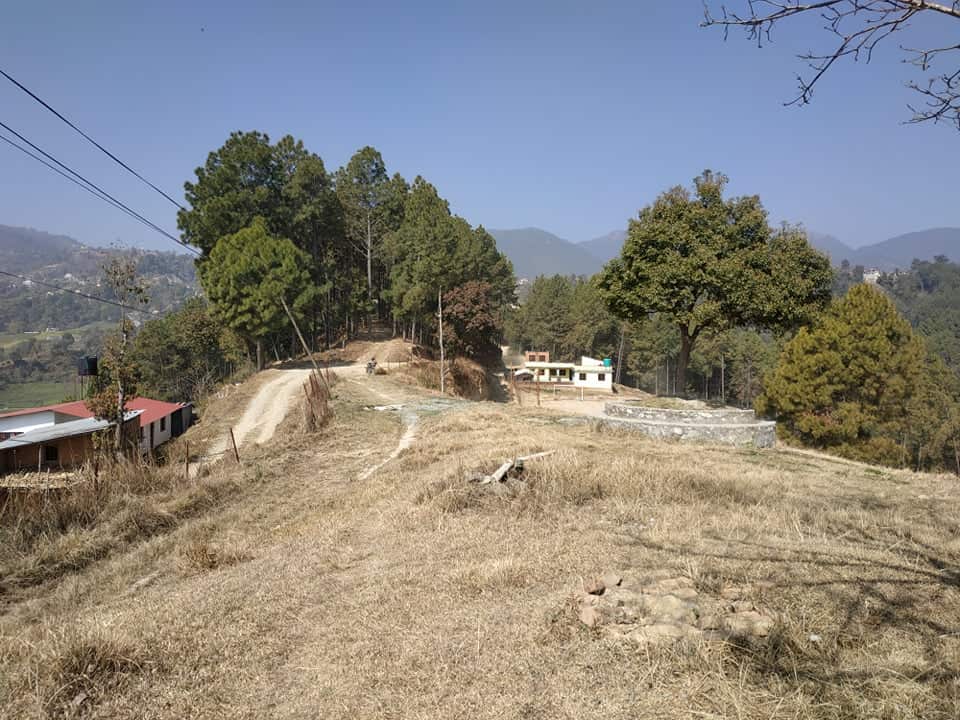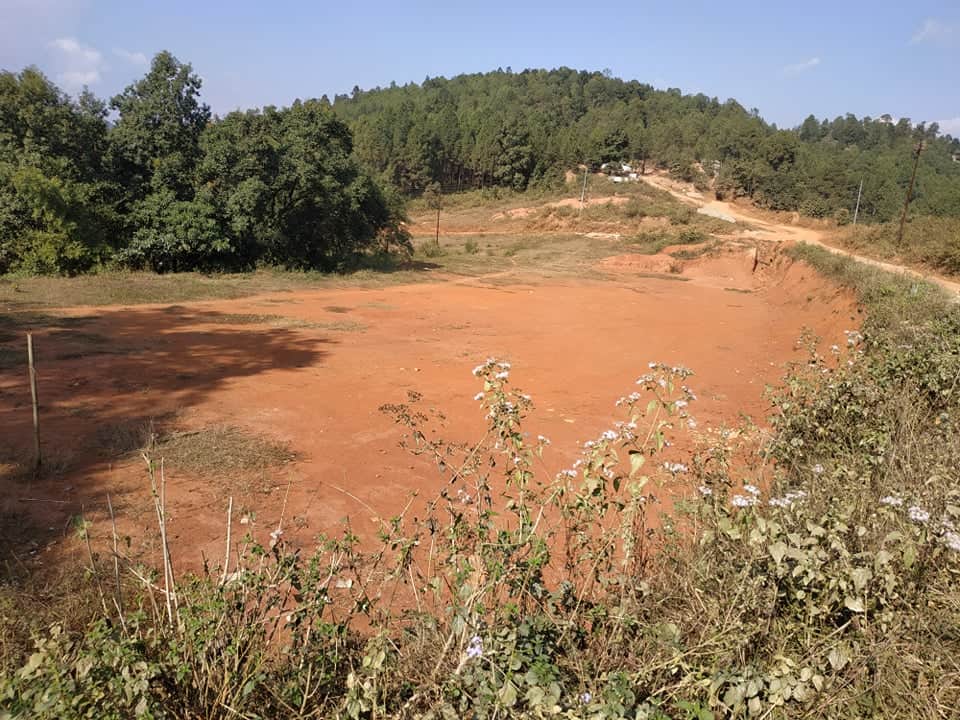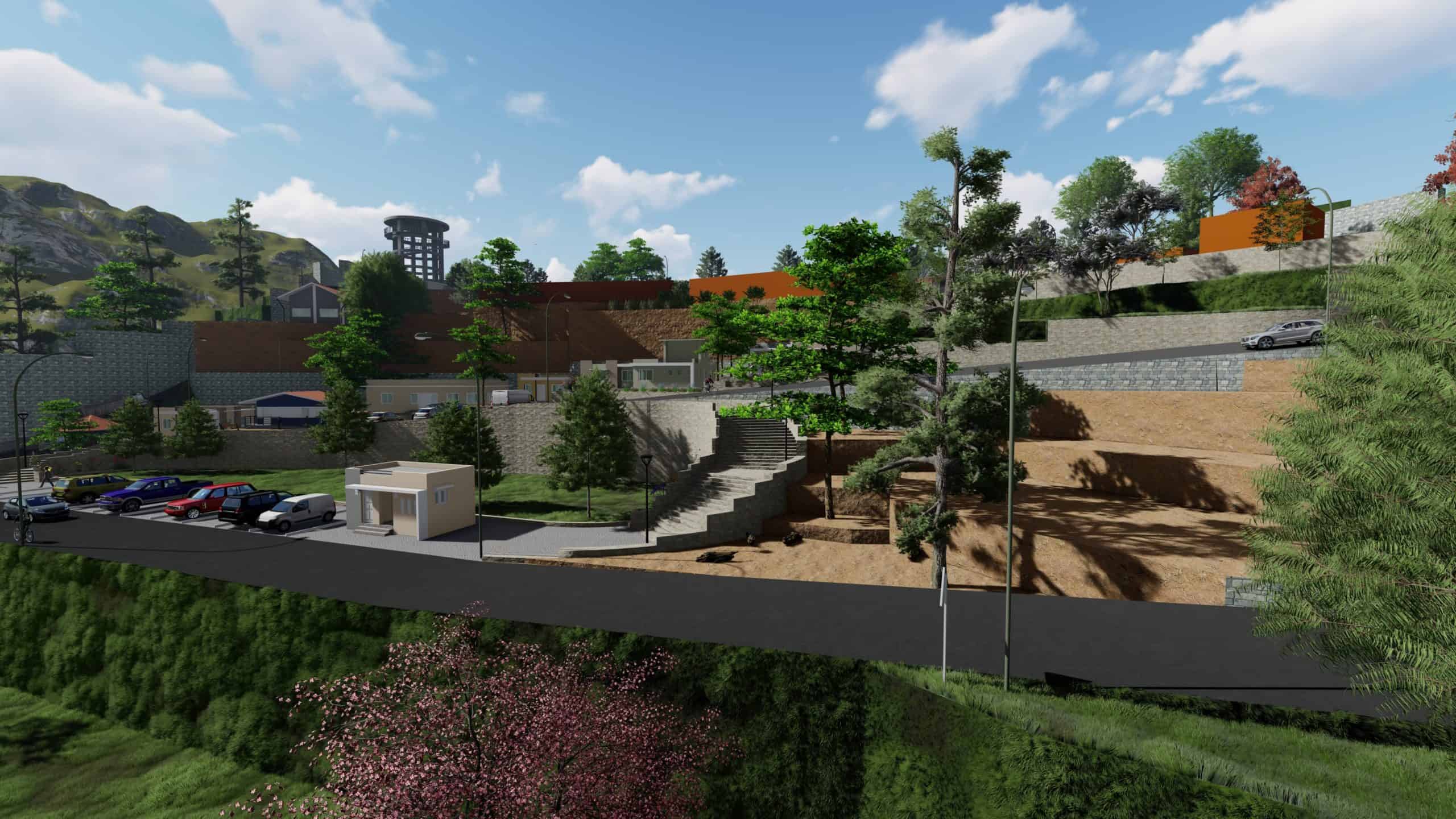The project that aims to provide jobs to 74000 people is progressing at a snail’s pace. With none of the three tiers of government prioritizing the project, a large amount of the state’s investment risks going to waste.
Laxmi Sapkota |CIJ, Nepal
More than two years since the decision to establish an ‘industrial village’ in Syangja’s Galyang Municipality, not so much as a DPR (detailed project report) has been prepared yet. The municipality has, however, already received the Rs9 million as grant in the first instalment for the project.
Not just Galyang, even the Dakshinkali, in Kathmandu, Godawari, in Lalitpur, and Suryabinayak, in Bhaktapur, have yet to prepare a DPR for the project’s establishment. Dakshinkali’s Mayor Mohan Basnet informed that the industrial village would be set up over 47 ropanis of land (23,910.8 sq mt) and the DPR formulation is in final stretch. But when CJR reached the purported site of the project–in Kopugaun, ward 7—the infrastructure work had not started. According to erstwhile ward chair Hari Timilsena, the project had yet to start because of frequent transfers of the municipality’s chief administrative officers.

Proposed industrial village in Kupu village located in Dakshinkali Municipality-7.
In Godawari, even though the budget was disbursed for the project in the previous fiscal year, work hasn’t started yet. Things run along the same line in Bardiya’s Badhaiyatal Rural Municipality and Saptari’s Dakneshwari Municipality.
The government had announced the establishment of ‘industrial villages’ in its budget for 2075/76 to create employment opportunities; maximize the use of local resources, raw material, technology and skills; and develop small-scale industries to increase production. According to the Finance Ministry’s estimates, about 74000 people would get employment through the project which would incur Rs22 billion.
While the ambitious, costly project that aims to increase production through use of locally-available raw material and provide employment in large-scale has been neglected by the federal and provincial government, the local government has also not put it in priority, with work yet to start.
Chandrakala Poudel, assistant secretary at Ministry of Industry, Commerce and Supplies, concedes that work for the project is yet to start even though the budget has been already disbursed for it. She stresses that local and provincial governments should be active to start the work.
Krishna Gyawali, former secretary at the Industry ministry, says the delay in the project’s inception has raised a question mark over the government’s work capacity. In Gyawali’s understanding, unless the project comes into operation, the government investment wouldn’t contribute to the national economy.
Gyawali emphasizes the need for the government to allow the operation and management of the project to provincial and local governments, citing the failure of the Special Economic Zone (SEZ), which has been long in limbo. Even though the government established SEZ in Bhairahawa in 2003, it is yet to come into full operation.
Former secretary Gyawali believes that the industrial village project would help generate employment and contribute to economic growth and curb the brain drain phenomenon. Chandra Ghimire, another former secretary at the Industry Ministry, is also assured that the project would create employment and make youths independent. “The village is being established with an objective to lessen works such as land procurement and infrastructure preparation for small-scale industrialists and to provide all kinds of facilities at a single place,” he says “For an effective implementation of the industrial village, the provincial and local government should adopt a policy to exempt taxes.”
Ghimire emphasizes on the need for all three tiers of governments to not only allocate budget but also introduce subsidies and packages to encourage the youths. “Establishing a favorable atmosphere for industries in the municipal level is to contribute to the national economy,” he says, adding that local units should themselves allocate budget for the project. Problem has also arisen because while the project is aimed for domestic and small-scale industries, many local units have prepared DPRs like that of SEZ, he says.
Negligence of Province 1 and the Madhesh
According to the Industry Ministry, the federal government has already disbursed Rs890 million for 82 such villages in the first phase. To add the provincial and local unit’s investment to that, the amount reaches Rs1 billion 340 million.
Five provincial governments have allocated Rs 310.5 million for the project so far. In the current fiscal, Bagmati Province has allocated Rs 150 million, Gandaki Rs 60 million, Lumbini Rs18 million, Karnali Rs25 million and Sudurpaschim Rs4 million. While these five provinces have allocated so much of their budget, Province 1 and Madhesh Province haven’t allocated a penny for the project. According to Bechankumar Mahato, information officer at the Provincial Ministry of Industry, Tourism and Forestry, this is because there is no clarity on which ministry is responsible for the establishment of the project. Province 1’s Minister for Industry, Labor and Employment Pratap Prakash Hangam says he has not much information about the project. “Since it’s a new concept, we don’t have much detail about it,” he says. “But we will take note now.”

Industrial village construction site at Panchkhal.
According to the ministry, one village is estimated to cost Rs150 million. According to which, in 103 municipalities, a total of Rs17 billion 600 million will be invested. Besides this, the private sector too will invest Rs5 billion in infrastructure, including stalls, and business operations.
Arjun Pokharel, secretary at Industry Ministry, believes that the project will make use of local resources and that will contribute to the national economy. “The project will create a favorable environment for investment at the local level and will impact the national economy,” he says.
According to the ministry, one village will have 15 to 60 industries. Pokharel says one industry will provide employment to 15 to 20 people.
According to the ministry’s estimates, in the hilly region, 20 industries in a village will employ about 400 people. In Tarai, 60 industries in a village will employ 1200 people, while in the Himalayan region, 15 industries in one village will employ 300 people. On the basis of which, 82 villages will employ 2600 in the Himalayan region, 14000 in hilly region and 42000 in Tarai. An additional 21 villages will employ an extra 15000 population.
Grants: increased in some place, returned in others
While a majority of local units haven’t been able to spend the first installment, 20 have already received the second installment of grants. According to the ministry, Sarlahi’s Hariwan, Nawalparasi’s Sunawal, Rupandehi’s Sainamaina, Baglung’s Tarakhola, Banke’s Khajura, Kavre’s Roshi and Syangja’s Waling Municipality have already received Rs9.2 million each in second phase.
Likewise, Surkhet’s Chaukune, Kavre’s Panchkhal, Udaypur’s Rautamai, Syangja’s Arjun Chaupari, Palpa’s Rampur and Tansen municipalities have received Rs8 million each additional grant. Dolakha’s Bhimeshwar, SIndhupalchok’s Sangachok, Parbat’s Bihadi, Kapilbastu’s Banganga, Darchula’s Naugad, Dhankuta’s Chhathar Jorpati and Gulmi’s Madane have received Rs5 million each in second installment.
After a 24 September 2019 decision of the Cabinet, Syangja’s Putalibazar Municipality received Rs9.2 million in grant. But after the municipality said it couldn’t procure land, it returned the amount. Tarachandra Dhakal, information officer at the municipality, informed that the process for the project couldn’t be forwarded due to controversy in land acquisition.
Among those who have returned the sum after failing to advance work are Kanchanpur’s Belauri Municipality and Sarlahi’s Chandranagar Rural Municipality. Potilal Chaudhary, mayor of Belauri, said that since the work couldn’t advance due to Covid-19 pandemic, the amount was returned.
Former chief of Chandranagar, Mahendra Mahato Suri, said the amount was returned after work couldn’t advance due to controversy in land acquisition. Then Chief Administrative Officer of Galyang Damodar Shar said work was halted because they couldn’t get land up to the standards. Expecting for a breakthrough, the amount is currently withheld in the municipality’s bank account, he said.
The first condition for grant is land acquisition. But there are examples where local units have received the grant despite failing to procure land. Kabindra Kumar KC, former chair of Surkhet’s Simta Rural Municipality, concedes preparation of DPR was delayed because of failure to procure land. In Surkhet’s Bheri Ganga Rural Municipality, too, the project’s work is in a limbo for controversy in land acquisition. According to Bhupendra Bahadur Chand, ex Mayor, the work was halted after locals’ protest over land acquisition.
In Dang’s Tulsipur Sub-metropolis, while a DPR has been prepared, controversy in land acquisition has halted work. Baburam Neupane, information officer, said locals seized the open land which the local unit had planned to occupy for the project. Santosh Gautam, then administrative officer at Siraha’s Dhangadhimai Municipality, said work was halted due to the pandemic even though the local unit did receive the grant.
While Bhaktapur’s Suryabinayak not only failed to prepare DPR in time, it also couldn’t manage land, so the work is in a limbo. Rajendra Prasad Kandel, chief administrative officer, said that they couldn’t prepare DPR for a lack of road to the public land in ward 7. Roads can’t reach the public land unless the private land is open.
The provision in the methodology
To establish an industrial village, there should be 25 ropani land in the Himalayan region, 35 ropanis in hilly, and 7 bigha in the Terai region. The industrial village declaration and operation methodology 2075 mentions that the federal government would provide grants in three installments for the project.
The village should have an administrative building, a bank and financial institution, a child care center, fire control mechanism, display and sales section, a bathroom and toilet, parking lot, canteen and primary health center. These facilities would be run in collaboration with local units or the private sector.

Model of the industrial village under construction in Mellekh Rural Municipality, Achham.
The industrialists can put their machinery or other property as collateral in banks or financial institutions to take out loans. Likewise, rent for the small-scale industries would be exempted by 50 percent for the first ten years, according to the methodology. The women entrepreneurs would get 50 percent rent exemption, while industries with investment from people less than 30 years would get up to 35 percent tax exemption, the methodology states.
Industries run out of local raw material would get 30 percent exemption on rent for 10 years and industries related to skill development, IT, software development and creativity development would get 20 percent exemption on rent for the first ten years.
From the grant amount, local units can run infrastructure development programmes in the industrial village. Under which, infrastructure such as border walls, fences, access roads, 11kV electricity transmission line, use of alternative energy sources as far as possible, godown, supply of water and waste management should be developed.
The government in its budget for fiscal year 2075/76 had announced the establishment of industrial villages in each local unit. After that, the Industry Ministry had on 18 March, 2019 released the methodology on the industrial village’s operation. The National Planning Commission has announced plans to establish 351 industrial villages within the ongoing five-year plan, including 44 in fiscal year 2076/77 and 40 in 77/78. With 21 more villages in 2078/79, as many as 105 have been announced so far.
Gandaki Province leads the race in industrial village establishment. As many as 28 local units have received permission for industrial villages from this province. Likewise, 20 local units from Lumbini have received permission, 16 from Bagmati, 15 from Sudurpaschim, 11 from Province 1, 9 from Madhesh Province and six from Karnali.
The government has announced plans to bring 105 villages into operation from fiscal year 2079/80 after completing the infrastructure work of those projects in coordination with all three tiers of government. The budget mentions necessary preparation will be made to establish industrial villages in the remaining local units as well.
Production starts in Achham
While some local units, unable to establish the industrial village, have returned the grant amount, Achham’s Melekh Rural Municipality has already brought it into operation. The local unit had already aimed for such a project even before the government’s announcement. The local unit has provided a grant of Rs1 million to run Khadka Garment Industry. According to ex chair of the local unit, Lok Bahadur Budha, the garment produced by the industry has already been purchased by Nepal Army based in Dadeldhura. The industry has employed 11 people.
Meanwhile, Kavre’s Dhulikhel Municipality has also prepared to launch the village. According to Taranath Luitel, chief administrative officer, an access road, electricity and drinking water has already been readied for the project, construction of a compound is in the final stage. Meanwhile, permission has already been granted to run industries such as an oxygen plant, one producing fodder for poultry and vegetable purification, and one manufacturing electric vehicles, according to Luitel.
According to officials from the Industry Ministry, 20 local units have advanced far ahead in construction of the industrial village. But only one has run a full-fledged project so far.
Meanwhile, among local units that haven’t even started to research the project despite taking grant amount are Siraha’s Dhangadhimai, Sarlahi’s Chandranagar, Syangja’s Galyang and Putalibazar, Bardiya’s Badhaiya Tal, Bajhang’s Surma, Baitadi’s Pancheshwar, and Surkhet’s Simta.
Entrepreneurs in the dark
The government aims to operate industrial villages in collaboration with the private sector. But the majority of entrepreneurs at the local level are unaware about the government’s plan. According to Bharat Acharya, chair of the industry committee under Nepal Chamber of Commerce, while discussions have taken place with various local chambers, no such interaction has taken place at the central level.
“Even though discussions are yet to take place, we have taken the establishment of industrial villages positively,” Acharya says, adding that since the products are yet to be decided and regions for them yet to be finalized, that might create some problems.
While Banke’s Khajura Rural Municipality has advanced the work on the project, Abdul Wahid Mansuri, chair of Nepalgunj Chamber of Commerce, professes ignorance about the project.
Jangabahadur Malla, chair of Kanchanpur Chamber of Commerce, Ishwari Poudel, chair of Gulmi Chamber of Commerce, and Prabin Shrestha, chair of Tanahu Chamber of Commerce, too are unaware that the project is afoot.
Purushottam Nepal, an expert on federalism, says that it’s impossible for local units to carry out all works related to industrial villages. “It is not so easy for local units to carry out works such as land management, infrastructure construction, industry establishment, and marketing of products,” he says. “That’s why there’s a delay in the village’s construction.”
In Nepal’s understanding, problems have arisen in the village’s establishment because of budget crunch and lack of priority to it from local units. “The establishment might be suitable in urban areas, but in rural areas, there are some problems,” he says. “Rather than establishing the villages in all local units, it’s better to identify promising destinations for their establishment.”
Meanwhile, Ashok Byanju, chair of Nepal Municipality Association, says that local units are capable of running the villages in coordination with the private sector. “The projects would be run after infrastructure construction, and the local units are capable of that,” he says.
But Nepal, the federalism expert, says that the project would come to fruition only if 10 percent of all complementary grants are allocated for the industrial villages’ establishment and if the center and provinces monitor them. Unless there is a commitment for establishment of industries, industrial villages might be risky endeavors, he says, advising that it is best for the central and provincial governments to coordinate and facilitate the establishment and operation of industrial villages.



